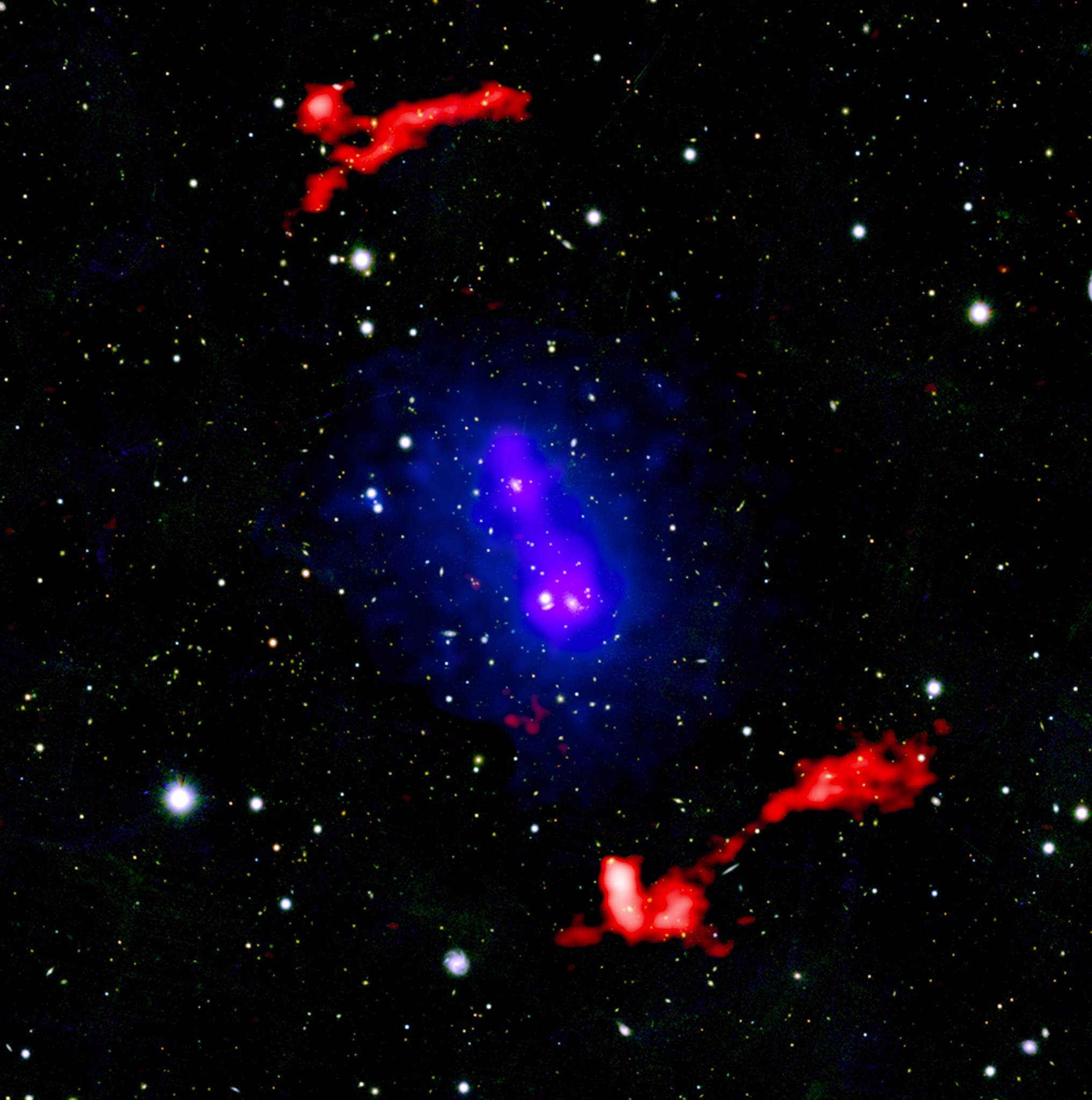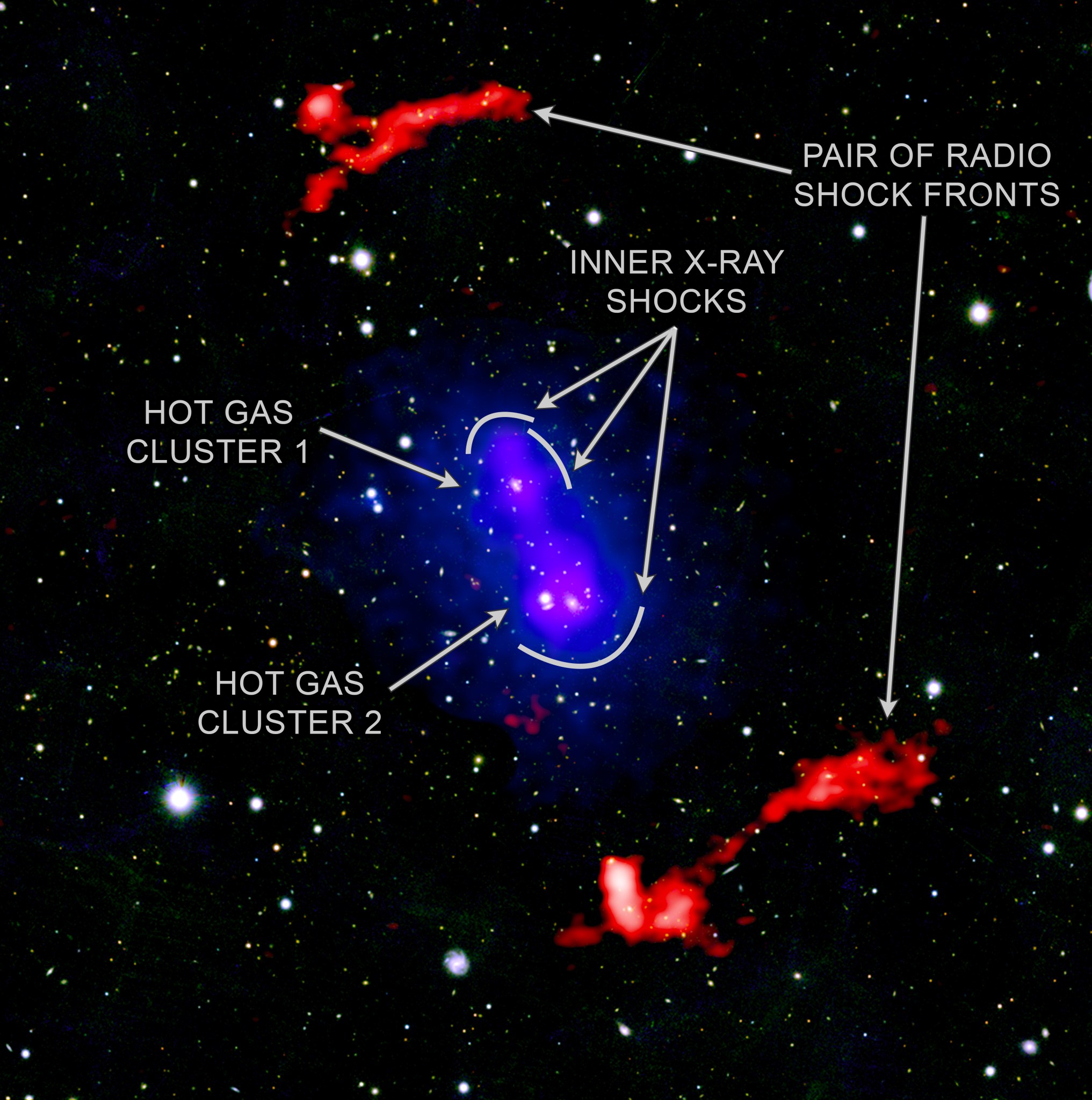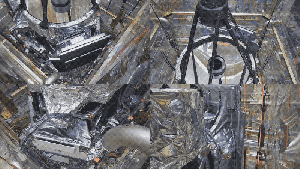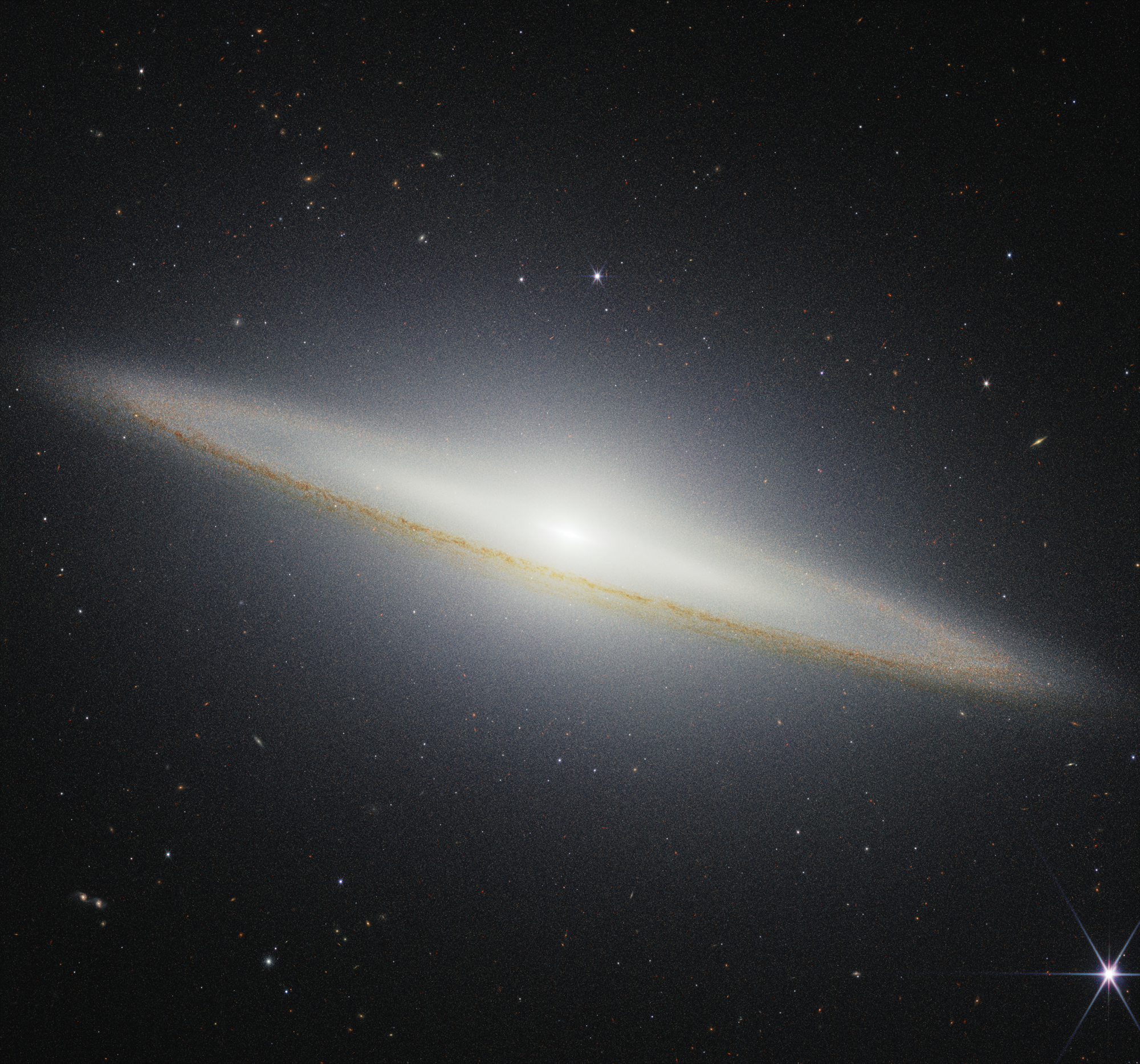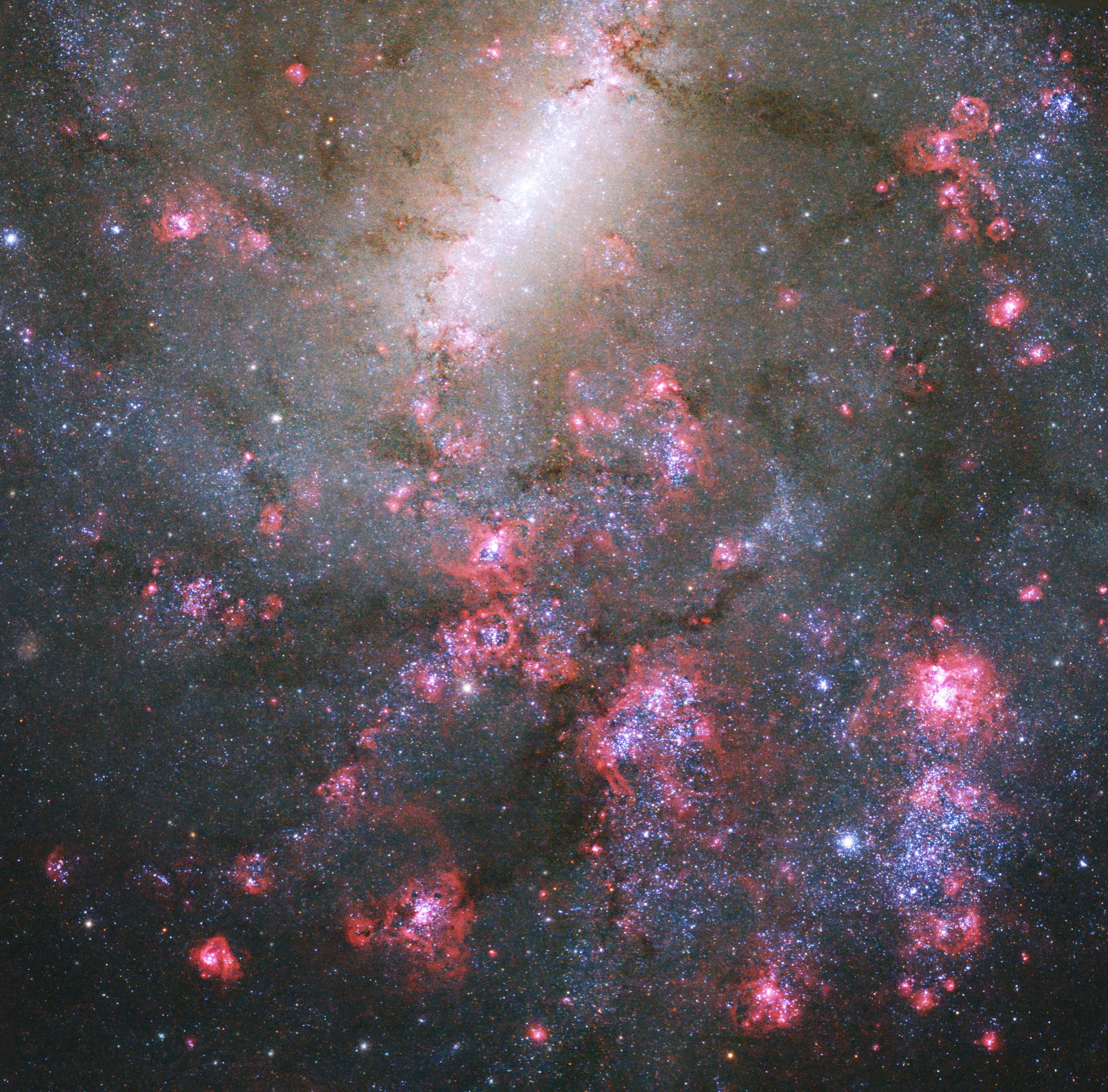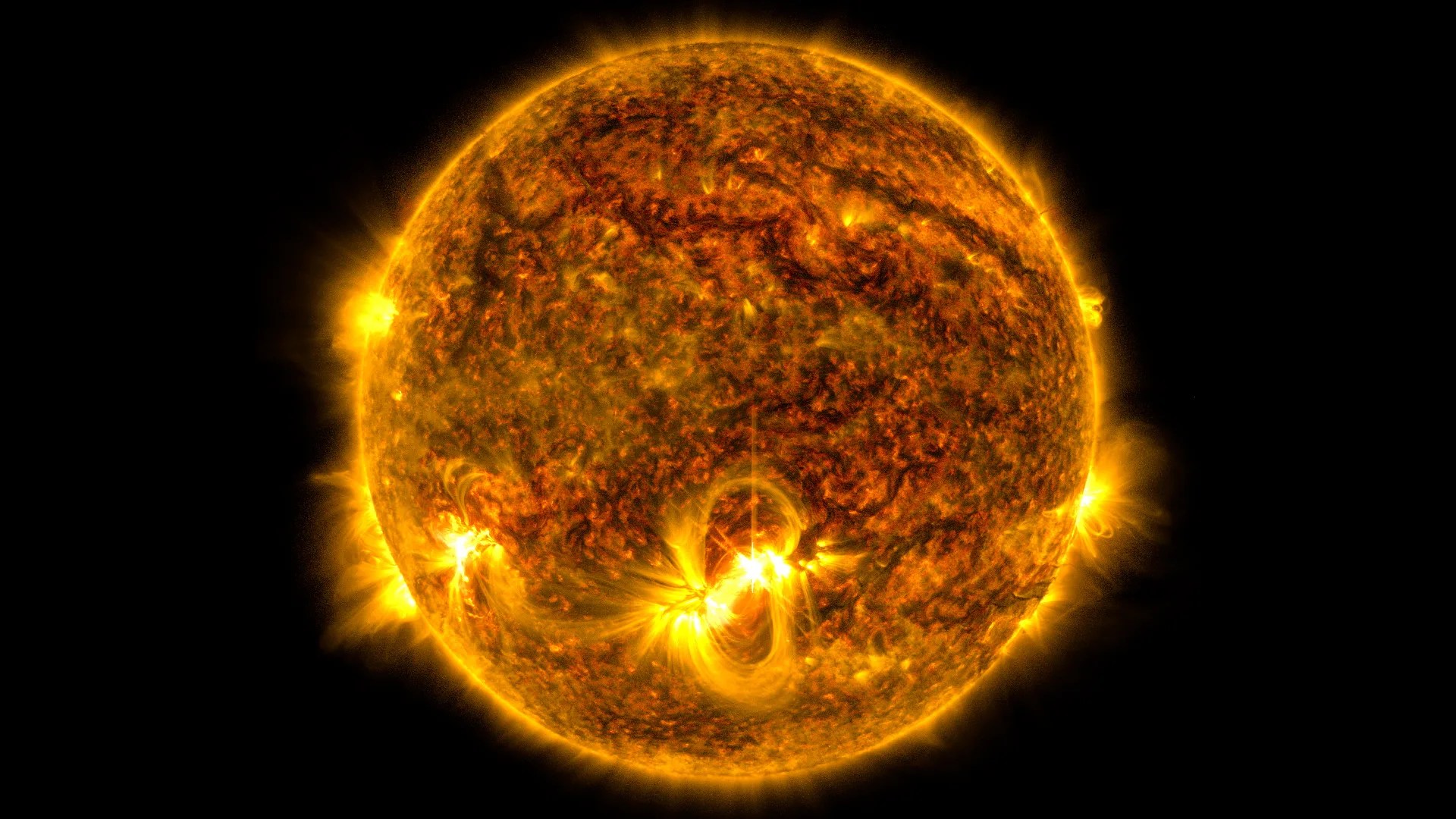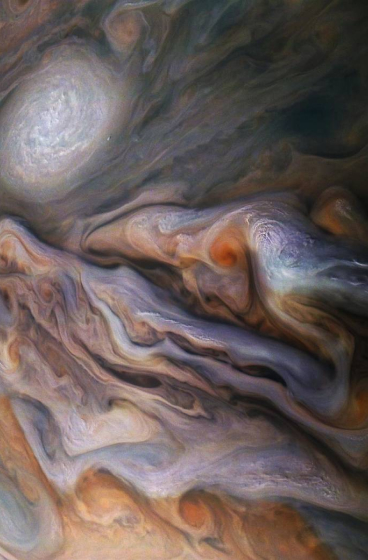New observations from NASA’s Chandra X-ray Observatory and other telescopes have captured a rare cosmic event: two galaxy clusters have collided and are now poised to head back for another swipe at each other.
Galaxy clusters are some of the largest structures in the Universe. Held together by gravity, they are monster-sized collections of hundreds or thousands of individual galaxies, massive amounts of superheated gas, and invisible dark matter.
The galaxy cluster PSZ2 G181.06+48.47 (PSZ2 G181 for short) is about 2.8 billion light-years from Earth. Previously, radio observations from the LOw Frequency ARray (LOFAR), an antenna network in the Netherlands, spotted parentheses-shaped structures on the outside of the system. In this new composite image, X-rays from Chandra (purple) and ESA’s XMM-Newton (blue) have been combined with LOFAR data (red) and an optical image from Pan-STARRs of the stars in the field of view.
These structures are probably shock fronts — similar to those created by jets that have broken the sound barrier — likely caused by disruption of gas from the initial collision about a billion years ago. Since the collision they have continued traveling outwards and are currently separated by about 11 million light-years, the largest separation of these kinds of structures that astronomers have ever seen.
Now, data from NASA’s Chandra and ESA’s XMM-Newton is providing evidence that PSZ2 G181 is poised for another collision. Having a first pass at ramming each other, the two clusters have slowed down and begun heading back toward a second crash.
Astronomers made a detailed study of the X-ray observations of this collision site and found three shock fronts. These are aligned with the axis of the collision, and the researchers think they are early signs of the second, oncoming crash.
The researchers are still trying to determine how much mass each of the colliding clusters contains. Regardless, the total mass of the system is less than others where galaxy clusters have collided. This makes PSZ2 G181 an unusual case of a lower-mass system involved in the rare event of colliding galaxy clusters.
A paper describing these results appears in a recent issue of The Astrophysical Journal (ApJ) and is led by Andra Stroe from the Center for Astrophysics | Harvard & Smithsonian (CfA) and collaborators. It is part of a series of three papers in ApJ. The second paper is led by Kamlesh Rajpurohit, also of CfA, and the third paper is led by Eunmo Ahn, from Yonsei University in the Republic of Korea.
NASA’s Marshall Space Flight Center in Huntsville, Alabama, manages the Chandra program. The Smithsonian Astrophysical Observatory’s Chandra X-ray Center controls science operations from Cambridge, Massachusetts, and flight operations from Burlington, Massachusetts.
Learn more about the Chandra X-ray Observatory and its mission here:
Visual Description
In this release, a composite image illustrates a dramatic cosmic story unfolding 2.8 billion light years from Earth. Presented both with and without labels, the image details the fallout when two galaxy clusters collide.
At the center of the image are the colliding galaxy clusters, which together are known as PSZ2 G181. This combined cluster somewhat resembles an irregular violet peanut shell, with bulbous ends linked by a tapered middle. Inside each bulbous end are several glowing dots; some of the galaxies within the clusters. The violet peanut shape is tilted at a slight angle, surrounded by a blue haze of X-ray gas.
Far from the bulbous ends, at our upper left and lower right, are two blotchy, thick red lines. These are probably shock fronts, similar to those created by jets that have broken the sound barrier. Bracketing the combined galaxy cluster, these shock fronts were caused by the initial collision about a billion years ago. They are currently separated by 11 million light-years.
New data from the Chandra and XMM-Newton observatories suggests that PSZ2 G181 is poised for another powerful cosmic event. Having already taken one swipe at each other, the two clusters within are once again on a collision course.
News Media Contact
Megan Watzke
Chandra X-ray Center
Cambridge, Mass.
617-496-7998
mwatzke@cfa.harvard.edu
Lane Figueroa
Marshall Space Flight Center, Huntsville, Alabama
256-544-0034
lane.e.figueroa@nasa.gov
